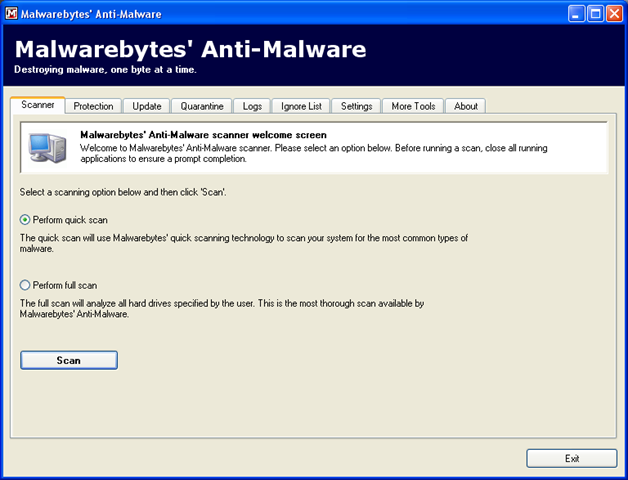Malwarebytes’ Anti-Malware
In my last post about Securing your Online transactions we have seen how to avoid Man-in-the-middle attack. Consider the following situation
A spy may be lurking on your system without your knowledge, secretly stealing your valuable data, such as credit information, typed in web addresses, online bank accounts etc. How to detect and remove them?
Malwarebytes’ Anti-Malware is an easy to use anti-malware application that can thoroughly remove even the most advanced malware.
It has several extra utilities for manual malware removal. The program is available in many languages and works just fine with other anti-viral and anti-spyware software.
Its database can be updated on a regular basis to detect the latest outbreaks.
Overall a great little tool and quite capable for it’s size.
Features:
- Effective heuristic detection.
- Light speed quick scanning.
- Ability to perform full scans for all drives.
- Quarantine to hold threats and restore them when needed.
- A small list of extra utilities to help remove malware manually
- Works together with other anti-malware utilities.
- Command line support for quick scanning.
- Context menu integration to scan files on demand.
OS: Windows 10®, Windows 8.1®, Windows 8®, Windows 7®, Windows Vista® (32-bit, 64-bit), Windows XP® (32-bit)
Possibly Related Posts:
- How to find ideal position for better network coverage of your Android Mobile phone?
- Free tool to scan WiFi network in your area, and find odd ones
- Speed up your Windows system with Autoruns, a free utility
- Free IP Scanner: IP scanner and port scanner
- Track activities on Windows system with LastActivityView


